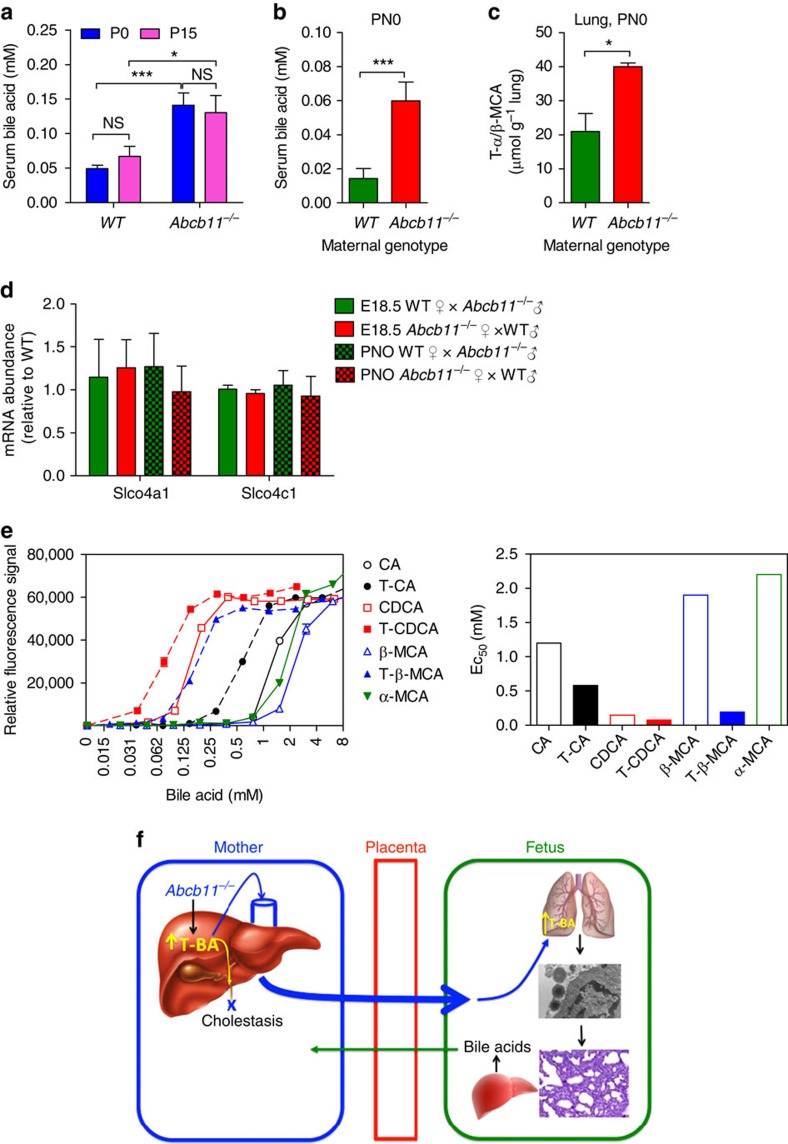Figure 3. Neonates of Abcb11-deficient mothers have elevated bile acids in serum and lung and bile acids disrupt ‘surfactant-like' liposomes.
(a) Total serum bile acids determined by enzymatic assay in WT and Abcb11−/− virgins (P0, blue bar) and pregnant females (P15, purple bar). WT (P0), n=14; WT (P15), n=13; Abcb11−/− (P0), n=9; Abcb11−/− (P15), n=6. (b) Neonatal serum bile acid concentration was greater in neonates from Abcb11−/−♀ × WT♂ (n=7) intercrosses. The green bar indicates a WT maternal genotype and the red bar Abcb11−/−. (c) Neonatal lungs from Abcb11−/− mothers had higher concentrations of taurine conjugated muricholic acid determined by UPLC-ESI-QTOFMS. n=3. The green bar indicates a WT maternal genotype and the red bar Abcb11−/−. (d) Messenger RNA levels of bile acid uptake transporters (Slco4a1 and Slco4c1) were determined by real-time Q-PCR from lungs of heterozygote embryos (E18.5) and neonates (PN0) of the following intercrosses: WT♀ × Abcb11−/−♂ and Abcb11−/−♀ × WT♂. n=4. (e) Large uni-lamellar liposomes were prepared from surfactant phospholipids (1-palmitoyl-2-oleoyl-sn-glycero-3-phosphocholine, 1,2-dipalmitoyl-sn-glycero-3-phosphocholine and 1,2-dioleoyl-sn-glycero-3-phospho-(1'-rac-glycerol) (5:4:1)). The liposomes were challenged with bile acids or their taurine conjugates over a range of concentrations (0.01–8.0 mM) to determine the potency to bilayer phospholipids. The dose-effect curve shown in left panel, and EC50 of individual bile salts in right panel. Emission filter, 355 nm; excitation filter, 530 nm. Each bile acid is colour-coded for recognition as described in the legend. CA, cholic acid; TCA, taurocholic acid; T-β-MCA, tauro-β-muricholic acid; α-MCA, α- muricholic acid. (f) A schematic model depicting an association of neonatal bile acids with maternal bile acid concentrations and with postnatal hypoxia. All experimental values are presented as mean±s.e.m. The height of the error bar=1 standard error. Statistical analysis was processed using two-tailed Student's t-test. *P<0.05; **P<0.01; ***P<0.001; ****P<0.0001.

